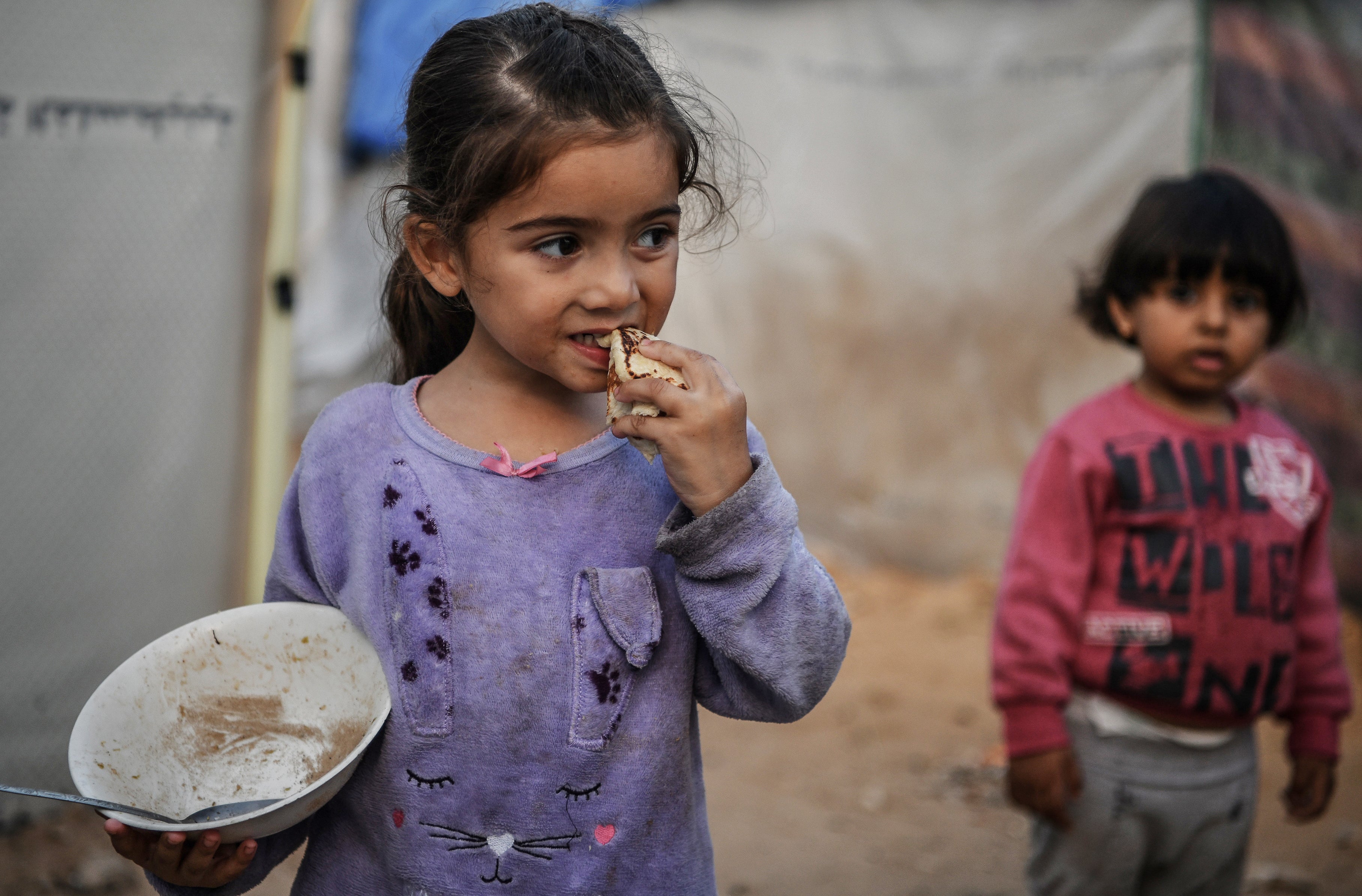One in four young children at risk of ‘irreversible’ harm due to poor diet, Unicef warns
Some 181 million children under five globally are in severe food poverty

Nearly one in four children under the age of five worldwide have a diet so restricted it harms their chances of survival, a new UN report has revealed.
Some 181 million children are unable to access a nutritious diet to sustain growth and development in early childhood and beyond, research by the UN’s children’s agency Unicef warned.
The report found millions of children in 100 countries were consuming only two food groups on a daily basis – typically milk with a starchy food such as rice, maize or wheat.
Less than 10 per cent of these children are fed fruit and vegetables, and less than 5 per cent are fed nutrient-dense foods such as eggs, fish, poultry, or meat.
Children who consume only two of eight defined food groups are considered to be in severe child food poverty.
The report pointed to the socio-economic impacts of the Covid pandemic, growing inequality, conflicts and the climate crisis, which have pushed up food prices and the cost of living to record highs.

Around 64 million affected children are in South Asia, and 59 million are in Sub-Saharan Africa. Of the 181 million children living in severe food poverty, 65 per cent reside in just 20 countries.
The report also found 97 million children, in relatively wealthier households, were in severe food poverty. This is due to a predominance of non-nutritious foods, and a lack of knowledge among parents about what a healthy diet should look like.
“In many contexts, cheap, nutrient-poor and unhealthy ultra-processed foods and sugar-sweetened beverages are aggressively marketed to parents and families and are the new normal for feeding children,” the report added.
In the Gaza Strip, months of hostilities and restrictions on humanitarian aid have “collapsed” the food and health systems, resulting in “catastrophic consequences” for children, the report added.
Approximately 90 per cent of children Gaza have been experiencing severe food poverty since the conflict ensued.

In Somalia, a country experiencing conflict, drought and floods, 63 per cent of children are living in severe child food poverty and in the most vulnerable communities, more than 80 per cent of caregivers reported their child had been unable to eat for an entire day.
However, the report also points to some countries where the rates of child food poverty are improving.
Burkina Faso has halved the rate of severe child food poverty within a decade. Similarly, Nepal has reduced the severe child food poverty rate from 20 per cent in 2011 to 8 per cent in 2022.
Unicef has called on governments and humanitarian organisations to ensure nutritious, diverse and healthy foods are available and affordable to children.
Join our commenting forum
Join thought-provoking conversations, follow other Independent readers and see their replies
Comments
Bookmark popover
Removed from bookmarks